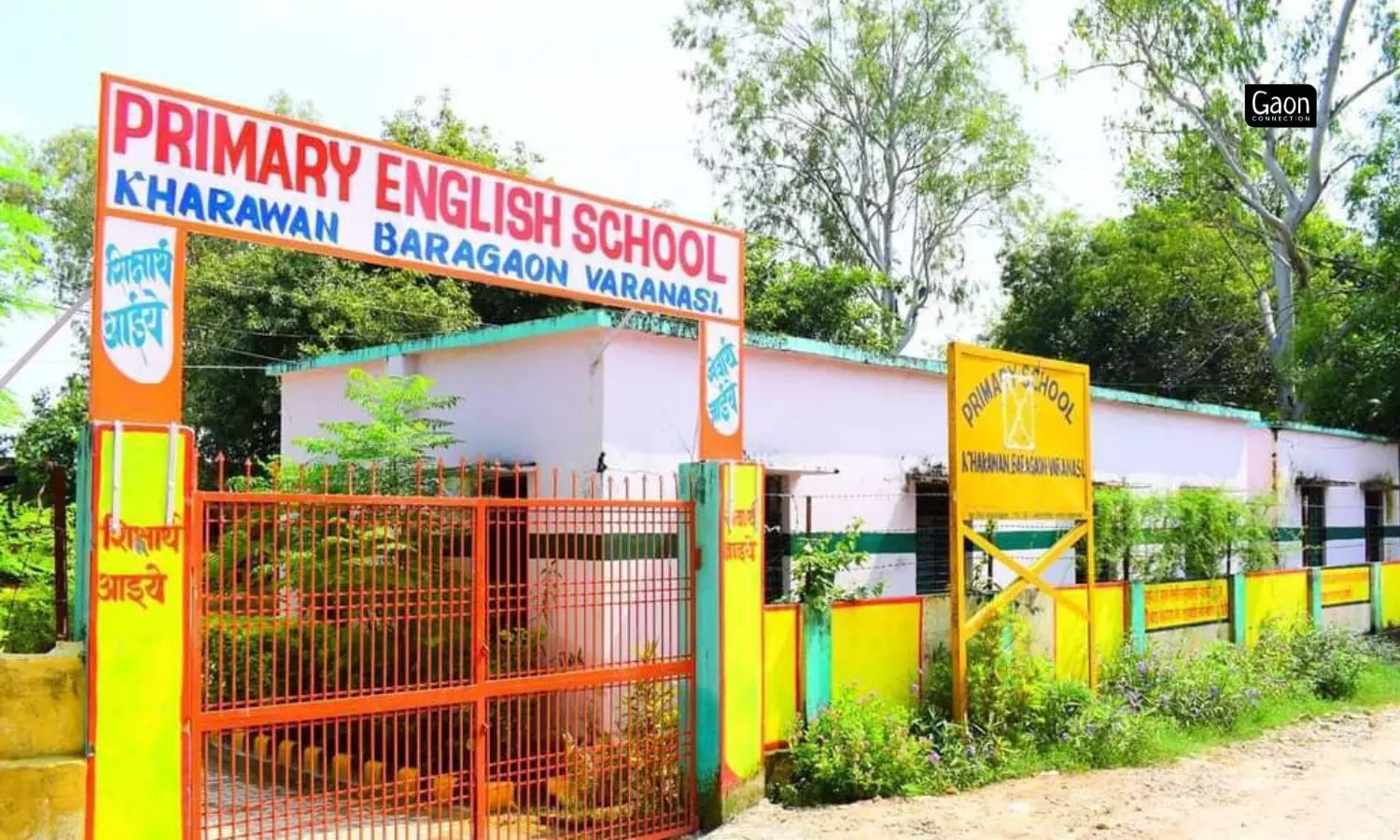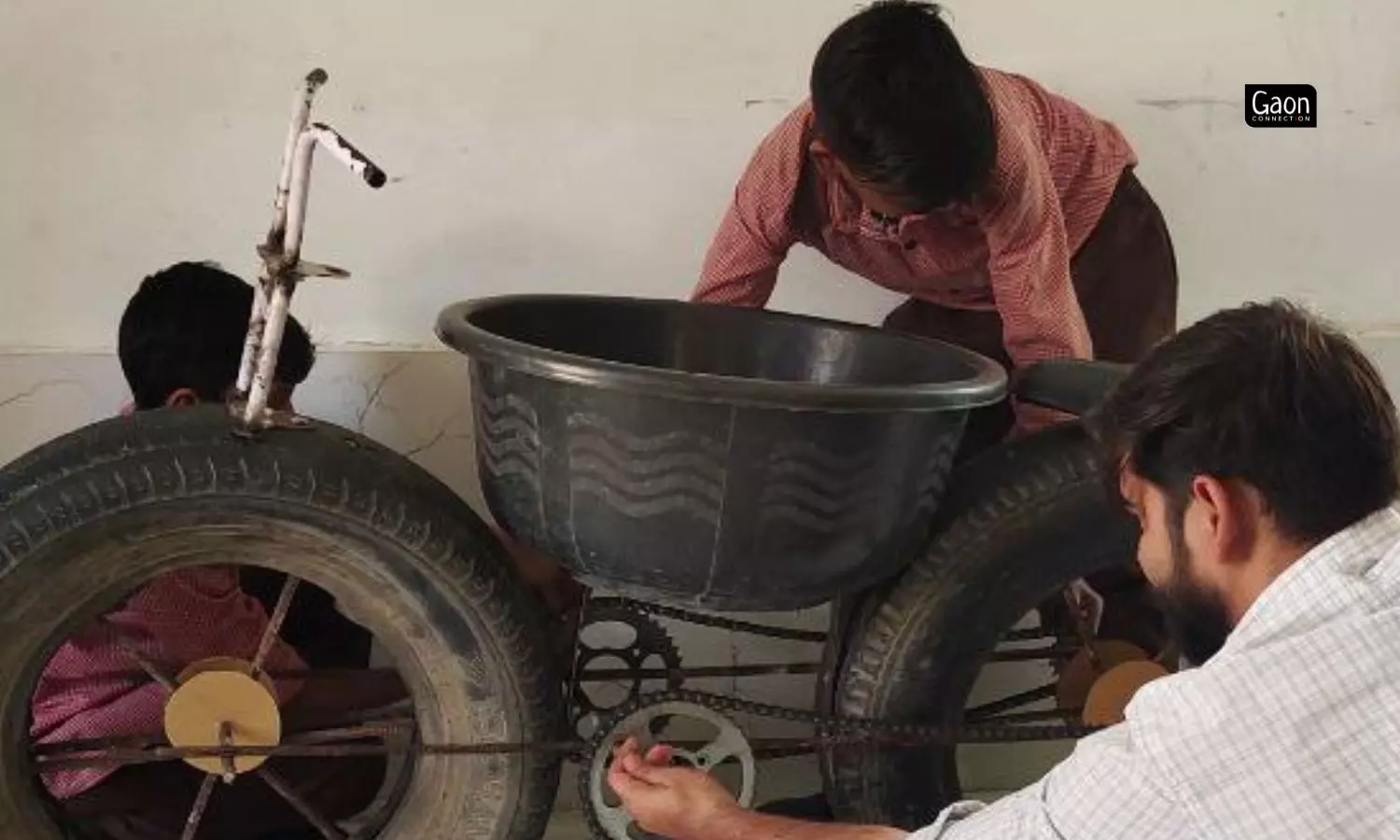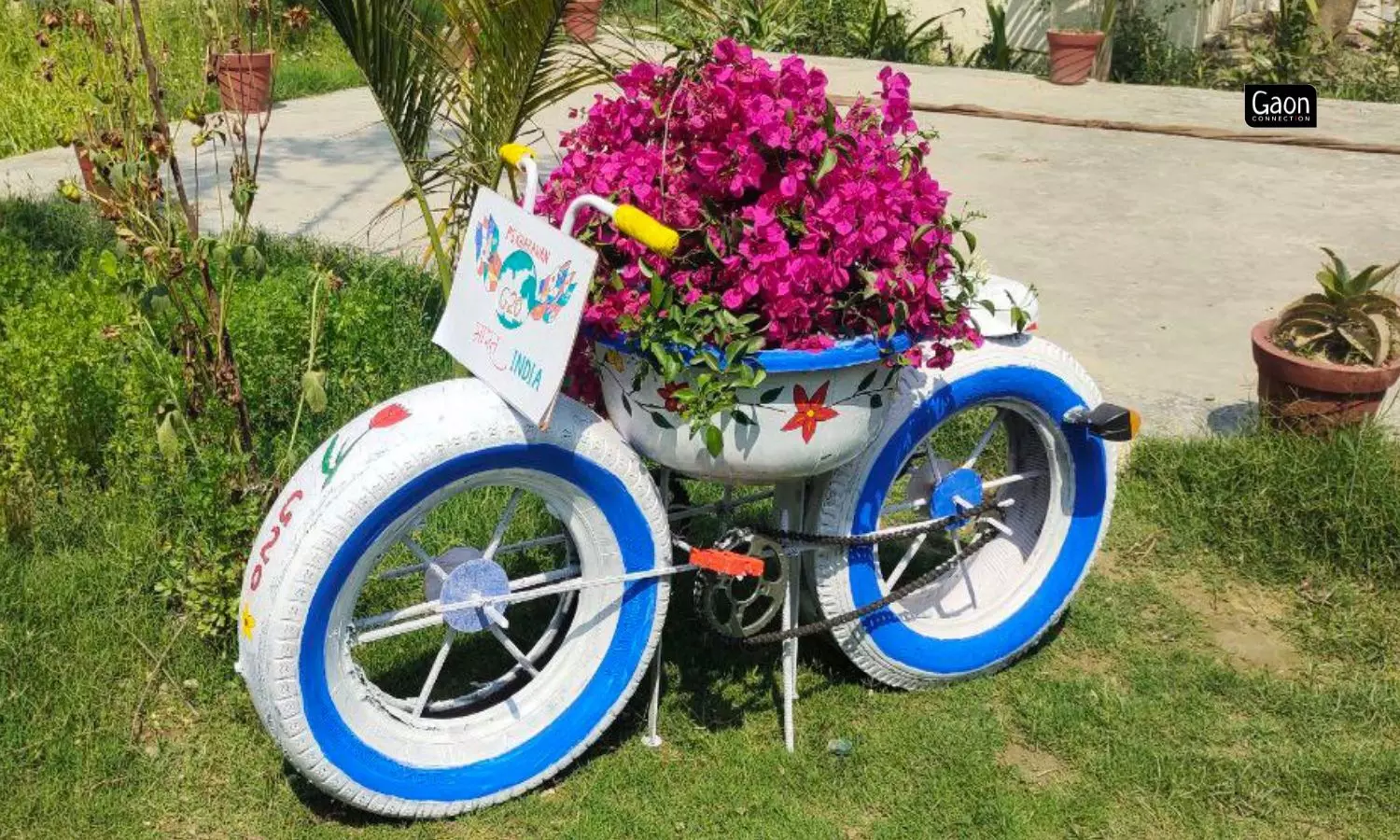Varanasi, Uttar Pradesh
As Varanasi gets ready to host the four-day G20 summit in August 2023, there is a buzz in the ancient city, which is also Prime Minister Narendra Modi’s constituency. Heads of G20 member countries and other important delegates will gather in Varanasi to discuss and decide matters related to development, economy and environment, among other issues.
The theme of this year’s G20 Summit in India is Vasudhaiva Kutumbakam or One Earth, One Family, One Future. And, people from across the ancient city of Varanasi are involved in her beautification process. Several schools have also been invited to participate in the transformation and showcase wealth from waste projects.
The students and teachers of the Kharavan English School in the city decided to make a flower pot holder in the shape of a cycle. And what is unique about this cycle is that it is made out of discarded plastic waste, rubber tubes and thrown-away metal bits. The cycle is 5.5 feet long, 3.5 feet high and weighs 42 kgs.
There is a message from the wealth-from-waste project to the world at large. “Pollution has become such a challenge to the planet. The cycle that the children made is to make people aware of this. Even for short distances people jump into their diesel-petrol vehicles that add to pollution. Why not use the cycle? It is an affordable mode of transport and good for our wellness too,” Ajay Kumar Gupta, the Kharavan School teacher said.
Also Read: Rajasthan: Identical Twins Team Up To Help Students Learn Sports and Art
The expenditure of making this cycle was only Rs 500, that too only to buy the paints, he added.
The scrap for making the cycle was bought from a scrap dealer at Sadhu Ganj Bazaar in Varanasi. The children purchased two old car tyres, a couple of indicators, handles, wires, some metal pipes, chain and sprocket, and broken pedals, the teacher said.
“We had a lot of fun making the colourful cycle potholder out of the waste that we got from the scrap shop,” Nitin of class five who was involved in the project, told Gaon Connection. “We have learnt how to convert scraps and waste into so many useful and decorative items. We are going to make many more,” he said. The other students who were with Nitin were Priyansh, Aditya, Aniket and Neeraj.

“Some of these models the students prepare will be displayed at several locations and public squares in the city,” Sandeep Srivastav, Public Relations Office (PRO) of the Municipal Council, told Gaon Connection. This would raise awareness about the importance of protecting the environment amongst the people, he added.
“We hope this will also encourage the people of Varanasi to keep their surroundings neat, clean and hygienic. The students of the schools have a big role to play,” the PRO said.
Also Read: “I learnt to read and write at the age of fifteen. And I am a teacher today.”
Promoting Recycling and Upcycling
“In a meeting with the district level education department at the end of February it was decided that schools would be invited to present projects by their students on the theme of G20,” teacher Ajay Kumar Gupta told Gaon Connection. The education department has instituted an inter school competition where students will make something useful out of scrap, he added.
The district education department has announced that the competition for making models out of waste materials will be at three levels — school, block and district level. The education department has announced a first prize of Rs 50,000, the second prize of Rs 30,000 and a third prize of Rs 20,000.

The three eco-teams in Kharawan English School with 20 students in each team, are involved in the waste-to-wealth project where they made the cycle.
The idea is to spread awareness amongst the government school children about the environment, recycling and upcycling, etc. The last date for registering for the competition is March 28, 2023.
There are about 250 government schools in the district and many of them are participating in this competition. They are making toys, pen stands, pot holders and so on with waste materials.
The primary school at Gajapur is busy making models of buses, trucks, television sets, bags, etc., while the students of Chiraigaon in Barthrakala primary school are creating flowerpots made out of discarded tins. Robots, telephone booths, models of volcanoes, etc are what the students of Dharsauna Primary School in Cholapur Block are making.
Also Read: Step aside, textbooks. Here comes the Big Book.
There are three eco-teams in Kharawan English School with 20 students in each team. They look after the school campus, tend to the gardens there and write regular reports about the progress of their activities, besides being involved in the waste-to-wealth project where they made the cycle.
Electronic and plastic wastes have become a huge threat to the planet, said Mithilesh Maurya, an environmentalist. “Burning these wastes leads to the emission of many harmful toxins into the air. Recycling and upcycling the waste materials can prevent that and the children of these government schools in Varanasi, are learning to do that,” Maurya told Gaon Connection.

“Hopefully, the public that will be viewing these models made by the school children will also go back home with a little bit more sensitivity about the planet and not be so quick to throw away things in their homes,” he added.
“So much of what we throw away can be reused, repaired, recycled and upcycled. There are businesses that work on the principle of recycling, and this is called circular economy,” Maurya said. “It creates employment, reduces the burden of waste on the natural world, and saves the destruction and defiling of water, land and air,” he said.




















